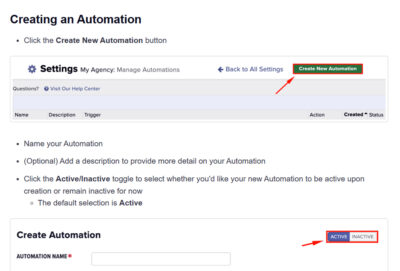In the era of the Great Resignation, it may seem like finding qualified candidates should be easier than ever. However, many recruiters are discovering that while a surge of applicants might be available, locating the best-fit candidates can still be a challenging process. Traditional sourcing methods, such as job postings, cold calls, and referrals, while effective, often result in a flood of applicants—many of whom may not meet the specific needs of the role.
So, how can recruiters take a more proactive approach to candidate sourcing? The answer lies in Boolean searches. This powerful method allows you to sift through resume databases and uncover top talent already stored in your applicant tracking system (ATS) or on platforms like LinkedIn and Google. Boolean searches are particularly useful during periods of low unemployment when top-tier candidates may not be actively applying to jobs but can be sourced with a targeted approach.
In this comprehensive article from Top Echelon Recruiting Software, we’ll dive deep into the world of Boolean searches—how they work, why they matter, and how to use them effectively to build a robust talent pipeline.
The Power of Boolean Searches: Going Beyond Passive Sourcing
There are two main types of candidates you’ll encounter as a recruiter: active and passive. Active candidates are those actively looking for new job opportunities, either because they are unemployed or seeking a career change. Passive candidates, on the other hand, are currently employed and not actively job hunting, but may be open to a new role if the right opportunity comes along.
Traditional recruitment methods—like job postings—primarily attract active candidates. However, relying solely on these methods can be limiting, as you’re essentially waiting for the right candidate to come to you. This is known as reactive sourcing. In contrast, Boolean searches represent a form of proactive sourcing, allowing you to actively hunt for candidates that fit specific criteria rather than waiting for them to apply.
The Advantages of Boolean Searches
Boolean searches empower recruiters to take control of their sourcing efforts, refining the search process and zeroing in on top-tier candidates. Some key benefits include:
- Precision: Boolean searches allow you to use highly specific criteria, helping you to find candidates with the exact skills, experience, and qualifications you need.
- Efficiency: By eliminating irrelevant results, Boolean searches save you time and streamline the recruitment process.
- Expanded Reach: Boolean searches enable you to tap into passive candidates who may not be actively seeking a new job but are a perfect fit for the role.
- ATS Integration: Many applicant tracking systems (ATS) support Boolean search functionality, allowing you to mine your existing candidate database more effectively.
Now that you understand the benefits, let’s explore the different Boolean operators and how they can sharpen your search strategies.
Boolean Operators: How They Work and When to Use Them
Boolean searches use a set of logical operators (Boolean operators) to either narrow or broaden your search criteria. By mastering these operators, you can improve your search results, making it easier to find ideal candidates. Below are the most commonly used Boolean operators and how to effectively leverage them in your search.
1. AND (+)
- Example: Marketing AND Management / Marketing + Management
- Result: Returns resumes that contain both the words “Marketing” and “Management.”
Using AND (or +) narrows your search results by ensuring that both terms appear in the resume. This is particularly useful when you are looking for a candidate with multiple, non-negotiable skills.
2. OR
- Example: Server OR Waiter
- Result: Returns resumes that contain either “Server” or “Waiter.”
OR broadens your search by including any resumes that contain one or more of the specified terms. This operator is useful when you want to expand your search to cover different variations of a title or skillset.
3. NOT (-)
- Example: Engineer NOT Software / Engineer – Software
- Result: Returns resumes that include the word “Engineer” but exclude the word “Software.”
Using NOT (or -) helps you eliminate unwanted results. If a role requires an engineer but you specifically do not want someone with software engineering experience, this operator will ensure those profiles are omitted.
4. Quotation Marks (“ ”)
- Example: “Technical Writer”
- Result: Returns resumes that include the exact phrase “Technical Writer.”
Quotation marks allow you to search for exact phrases rather than individual words. This is particularly useful for job titles that consist of multiple words, ensuring your search is more precise.
5. Parentheses ( )
- Example: (“Customer Support” OR “Customer Success”) AND Manager
- Result: Returns resumes that contain either “Customer Support” or “Customer Success,” as well as the term “Manager.”
Parentheses are essential for grouping related terms and clarifying the logic of your search. Without them, you may not get the intended results, as the search engine won’t understand how to prioritize your criteria.
6. Asterisk (*)
- Example: Recruit*
- Result: Returns results that start with the root word “Recruit,” such as “Recruiting,” “Recruiter,” or “Recruitment.”
The asterisk serves as a wildcard, allowing you to search for multiple variations of a word. This operator is highly effective when you want to capture a range of related terms.
7. Proximity (~)
- Example: “Senior Developer”~3
- Result: Returns resumes where “Senior” and “Developer” appear within three words of each other.
The proximity operator helps you control how closely related two terms should be. This is particularly useful when searching for job titles that may vary slightly in phrasing, such as “Senior Developer” or “Developer, Senior.”
Mastering the Order of Operations in Boolean Searches
When conducting a Boolean search, it’s crucial to understand the order of operations—the hierarchy of how search engines process Boolean operators. To ensure your search delivers accurate results, Boolean operators are processed in the following order:
- Quotation Marks (“ ”)
- Parentheses ( )
- NOT (-)
- AND (+)
- OR
To maximize your results, always use parentheses to group terms logically and apply operators in the correct order. Many searches fail due to improper grouping or misunderstanding how operators interact. By practicing and refining your Boolean search strings, you’ll become more efficient at narrowing your results and finding top-tier candidates.
How to Conduct a Successful Boolean Search: A Step-by-Step Example
Let’s walk through an example of a Boolean search for a marketing position requiring five years of experience and located in Los Angeles. Here’s how to approach it:
- Define the essential criteria: You need candidates with marketing experience and a minimum of five years in a managerial role.
- Boolean Search: (Marketing AND Manager) AND “5 years”
- Expand the search with OR: To cast a wider net, include related roles that the candidate might have held, such as “Marketing Director” or “Marketing Lead.”
- Boolean Search: ((“Marketing Manager” OR “Marketing Director”) AND “5 years”) AND Los Angeles
- Narrow the search using NOT: To avoid irrelevant roles, you can add the NOT operator to eliminate titles you don’t want to see, such as “Account Manager.”
- Boolean Search: ((“Marketing Manager” OR “Marketing Director”) AND “5 years”) AND Los Angeles NOT “Account Manager”
- Incorporate proximity searches: If you’re looking for more nuanced job titles, such as “Senior Marketing Executive,” you can use proximity operators.
- Boolean Search: “Marketing Executive”~3
By layering these operators and refining your search string, you’ll produce a more targeted list of candidates who meet your specific criteria.
Avoiding Common Pitfalls in Boolean Searches
Boolean searches are incredibly powerful but can also lead to misleading results if not used carefully. One common mistake is overly broad searches, which can return irrelevant candidates, or overly narrow searches, which may exclude viable candidates. Here’s how to avoid these pitfalls:
- Be specific, but not too narrow: If your search string is too broad, you’ll waste time sifting through unqualified candidates. Conversely, if it’s too narrow, you risk missing out on great talent. Strike a balance by starting with a broad search and gradually narrowing it down.
- Test and refine: Don’t be afraid to experiment with different search strings. Boolean searches require some trial and error to perfect. Each time you run a search, analyze the results and adjust your operators as needed.
- Use parentheses: One of the most common errors in Boolean searches is failing to use parentheses. Without them, the search engine may misinterpret your criteria, leading to unexpected results. Always group related terms with parentheses to control how the search is processed.
Integrating Boolean Searches with Your ATS
If your applicant tracking system (ATS) supports Boolean searches, you can leverage this functionality to more efficiently sift through your candidate database. A top-tier ATS will even parse resume content and allow you to build complex Boolean search strings to find hidden talent in your database.
Many ATS platforms now offer advanced search features that can streamline Boolean searches and even suggest relevant search terms based on your criteria. For recruiters using older ATS systems that lack Boolean functionality, it may be worth considering an upgrade to take full advantage of this powerful tool.
Maximize Your Candidate Pool with Boolean Searches
Mastering Boolean searches gives recruiters a significant edge in proactively sourcing top-tier candidates. With the right approach, you can narrow your search, avoid irrelevant results, and find qualified candidates who meet your specific requirements. Boolean searches allow you to be more proactive, saving time and increasing your chances of finding the perfect candidate.
As you continue to hone your Boolean search skills, you’ll discover that this method of sourcing candidates becomes more intuitive and effective. By combining Boolean searches with your ATS and other sourcing strategies, you can build a well-rounded candidate pipeline that supports your recruitment goals for years to come.








